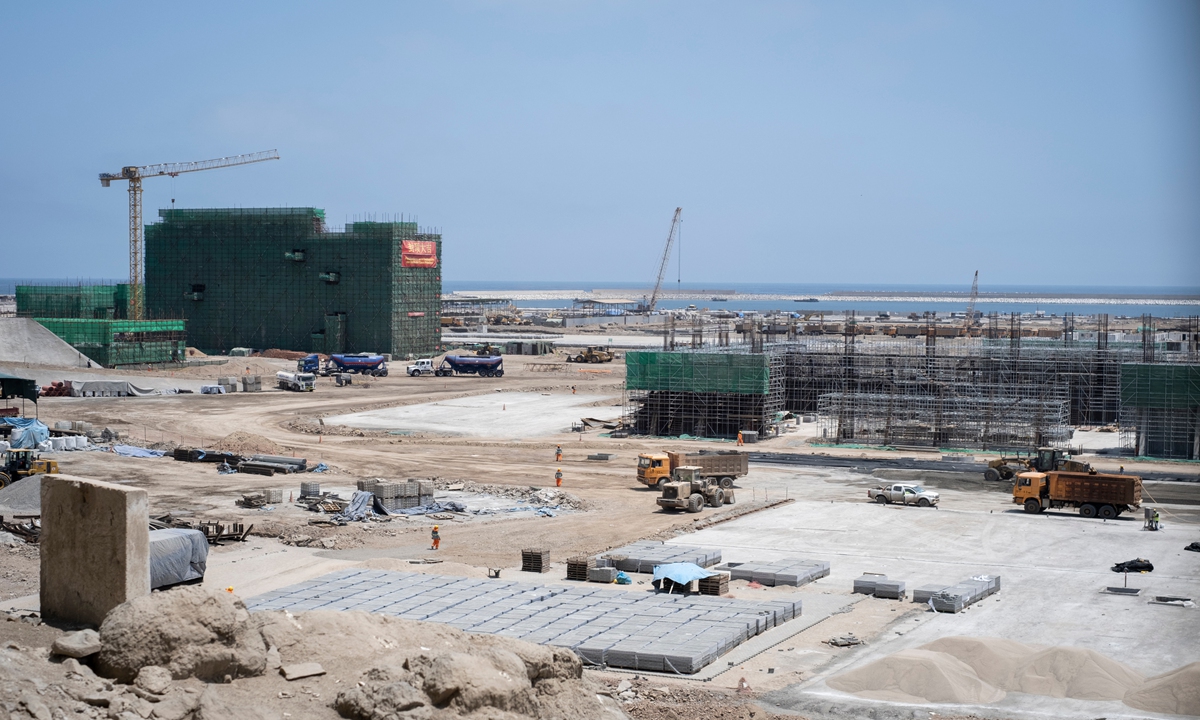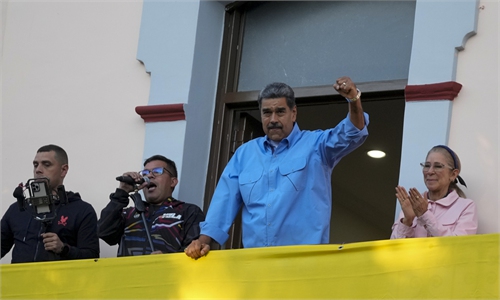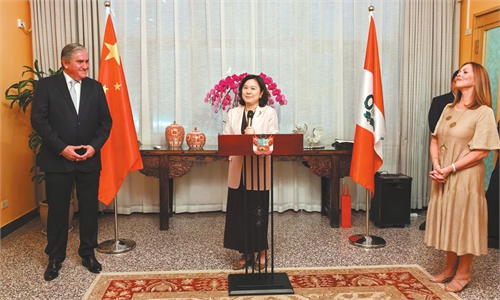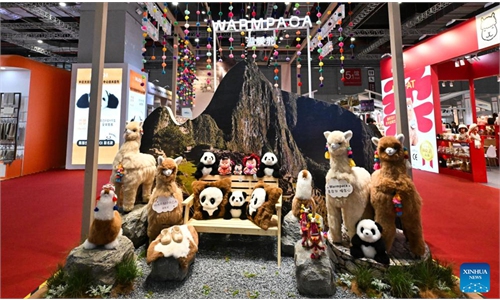Chancay Port, a vindication of China-Peru win-win cooperation under BRI
China-Peru partnership is vindication of win-win BRI development

Chancay Port, located north of Peru's capital, Lima, is under construction by a Chinese enterprise on March 5, 2024. Photo: VCG
As the 2024 APEC gathering will commence soon in Peru, the Chancay Port, located north of Lima, Peru's capital, and constructed by a Chinese company, is also set to open for business.
The Chancay Port, an important infrastructure project in Latin America under the China-proposed Belt and Road Initiative (BRI), will transform Peru into a major trade hub in the region.
The port is expected to produce a broad economic impact, helping open new trade routes and enhance the competitiveness of Latin America as a whole, analysts said.
The flagship project puts the pragmatic cooperation between China and Peru into full display, illustrating China's commitment to working with Peru and other Latin America and Caribbean countries to seek co-prosperity, they noted.
Peru's President Dina Boluarte in July said the mega port will serve as a "nerve center" to facilitate connection between South America and Asia, the Xinhua News Agency reported.
The port, scheduled to be inaugurated in November, "will open investment opportunities for the development of infrastructure for all countries that see Peru as a point of connection to access the gigantic Asian market," Boluarte said.
Project for connectivity
The port stands to become a major trade hub in the region and will serve to ship cargo from the north, east and central mountains of Peru and redistribute cargo from countries such as Chile, Ecuador, Colombia, Brazil and Paraguay, Boluarte said.
The port's inauguration will coincide with this year's Asia-Pacific Economic Cooperation Economic (APEC) Leaders' Meeting to be held in Peru, she said, adding the port will benefit farmers, small and medium-sized businesses and thousands of Peruvian families.
"Strengthening infrastructure connectivity is an efficient approach to promote China-Peru economic and trade cooperation, which will help the Latin American country transfer its geographical advantages into tangible benefits," Zhou Zhiwei, an expert in Latin American studies at the Chinese Academy of Social Sciences told the Global Times on Thursday.
Moreover, the project will have a multiplier effect, serving as a key regional hub to provide new routes for other countries to enter Asia-Pacific markets, Zhou said. Nearly half of Brazilian exports are of agribusiness, with China being the top destination between July 2023 and July 2024.
If Brazil gained access to the Pacific Ocean, potentially through ports in Peru, such as the Chancay Port, the shift could significantly increase Brazil's agricultural exports to China. The route would become shorter, faster, and less costly, J. Renato Peneluppi Jr., a Brazilian professor specializing in public administration and energy transition policies at the China campus of the University of Worcester, told the Global Times on Thursday.
"Chancay Port ... offers Brazilian products access to the Asian market, especially to China. The Brazilian government is fully committed to realizing this ambitious plan for regional integration to boost the competitiveness of Brazilian exports," the Brazilian expert noted.
During an interview with the Global Times recently, Juan Carlos Capuñay, former Peruvian Ambassador to China, described the project as "a significant initiative aimed at developing a national infrastructure system that will enhance economic integration, regional, and world connectivity."
"The port project will serve as the primary logistical and operational hub for connecting South America with the Asia-Pacific region," the former envoy said, giving the example of how the port will help reduce the sea transportation time for cargo between South America and Asia, which will result in significant cost savings in shipping goods to and from China and other Asian countries.
Closer cooperation
Zhou said that the progress of the port reflects the deepening economic and trade relationship between China and Peru.
Peru is one of the first Latin American countries to establish diplomatic ties and a comprehensive strategic partnership with China and is the first Latin American country to sign a package of free trade agreements with China, according to Xinhua. In 2019, Peru signed a Memorandum of Understanding with China on BRI.
At present, China is Peru's largest trade partner, largest export market, and largest source of imported goods, while Peru is China's fourth largest trade partner in Latin America. In 2023, their bilateral trade volume reached $37.691 billion, representing a year-on-year growth of 0.8 percent.
In June this year, Peruvian President Dina Boluarte paid her first state visit to China, bringing a delegation of key cabinet members and representatives from the economic sector.
The two heads of state jointly witnessed the signing of the Joint Action Plan of the Government of China and the Government of Peru (2024-2029), and multiple bilateral cooperation documents regarding economic and trade relations, digital economy, technological innovation, inspection and quarantine, and news media, among others. The two sides announced the completion of negotiations on upgrading their free-trade agreement, Xinhua reported.
"In addition, the two countries are also exploring more collaboration in the green economy, particularly in new-energy vehicles (NEVs)," Zhou said.
Peru enjoys abundant mineral resources, with Chancay Port close to major lithium-producing countries such as Argentina, Bolivia, and Chile. China has a mature technology and production chain, and bilateral collaboration in the NEV sector will achieve win-win results, Zhou noted.
The pragmatic collaboration between China and Peru serves as a good model for further partnerships across Latin America, and it also demonstrates China's commitment to pursuing common development and building a community with a shared future with Latin American countries, which is based on mutual respect and trust, Zhou said.
A total of 22 Latin America and Caribbean countries have joined the BRI by signing cooperation memoranda with China. Also, China has become the region's second-largest trading partner and has signed free trade agreements with five Latin American countries, Xinhua reported in July.



